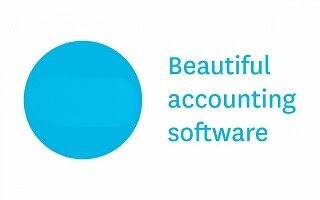
You can use the account balances in the general ledger to generate the trial balance. The dollar amount of total debits must equal total credits in the double-entry accounting system. In financial accounting, a company’s main accounting record is its general ledger. Although there are tools that automatically categorise these transactions, such as bank integrations, it’s still important to know the basic components of general ledger accounts. Knowing the components means you can spot potential issues in your financial data.
Every business must strive to maintain accurate accounting records to generate reliable financial statements. The general ledger then becomes the master financial document for your business with columns for the name of the transaction, debits and credits, and the dollar amount, along with a running balance. Transfer the financial transactions from the general journal to the appropriate accounts on the general ledger with all their detail.
FAQs about General Ledger
If you deplete other assets, or if you add liability or equity, those transactions are credits. A financial transaction is recorded in the general journal in chronological order. When the financial transactions are transferred to the general ledger, they are recorded on an account-by-account basis. General ledger is the book that stores and updates all the accounts in the company when the transactions are recorded in the general journal. It is the set of accounts that contain all transactions in each account in the company. If you’re more of an accounting software person, the general ledger isn’t something you use but an automated report you can pull.
While this is just a partial list, remember that any transaction made by your business will always affect your general ledger accounts accordingly. If you are a freelancer or sole proprietor, chances are that you may be able to get by without a general ledger, simply because you’re not using double entry accounting. But for every other business owner, the general ledger is the most important part of accounting. Even when using codes, your records should still include a description of each transaction.
- Likewise, Sales Ledger also helps you to keep track of payments received and yet to be received from your customers.
- Therefore, you can further use the accurate amounts showcased in your Trial Balance to prepare the financial statements.
- The general ledger purpose is to organize the transactions in their proper accounts where they belong.
Then, even if you pass your books on to an accountant or bookkeeper, the descriptions will help them track what’s what. When you assign a code to each type of transaction, searching your ledger becomes much easier. For instance, when doing their own books, many business owners assign revenue sub-ledgers numbers starting at 100 and expense sub-ledgers codes starting at 200.
Airtight Contract Templates & Agreements for Businesses
Then, you summarize that information in a master notebook—the general ledger. Double-entry bookkeeping uses a ledger to track credits and debits with a trial balance to assure that everything is accurately tracked. If the accounting equation is not in balance, there may be a mistake in your journal entry. Some accounting solutions alert users when a journal entry does not balance total debits and credits. However, the number of debit and credit accounts does not have to be equal, as long as the trial balance is even. For example, you may have 10 payments listed on the credits side to pay for supplies but only two sales (listed in the debits side).
This is because there are a number of transactions that occur during an accounting period. General Ledger Accounts help you to record details of transactions that your business undertakes over an accounting period. Thus, each transaction of your business takes place in such a way that this equality between the two sides of the accounting equation is always maintained. That is, at any point in time, the resources or the assets of your business must equate to the claims of owners and outsiders. Say you own a publishing house Martin & Co. and purchased 20 kg paper on cash at $20 per kg on December 1, 2020. Therefore, the following is the journal and ledger that you need to record into books for such a transaction.

After the journals are complete for the period, the account summaries are posted to the ledger. The general ledger is an essential part of your accounting and bookkeeping processes. The general ledger serves as a repository for every transaction that is recorded, and is a must for any business using double-entry accounting. QuickBooks’ intuitive accounting software helps provide a comprehensive audit trail. If you’re ever audited, you won’t have to dig through paper files to get organized. You can pull your general ledger report, specify an account, and review the details and supporting documentation (invoices, receipts, etc.).
Compare your startup’s revenues and expenses on a month-by-month, quarter-by-quarter, and year-over-year basis with this startup business budget template. Enter expenses, such as wages or operational and marketing costs, and revenue sources, such as commissions, sales, and investments. A dynamic Summary tab provides a dashboard view of budgeted expenses compared to revenue so that you can easily review and share key financial information. When a company receives payment from a client for the sale of a product, the cash received is tabulated in net sales along with the receipts from other sales and returns. The cost of sales is subtracted from that sum to yield the gross profit for that reporting period. Further, you also match General Ledger Account balances to the source documents to see if the accounts are accurate.
How a General Ledger Works
See our free small business income-related resources for additional small business income tools. For example, you identified that a payment of $1,000 to your vendor William Paper Mill was wrongly recorded as $100. Now, the best practice of recording a correct entry is to reverse the original entry and then record a new entry with the correct amount.
Every entry of a financial transaction within account ledgers debits one account and credits another in the equal amount. So, if $1,000 was credited from the Assets account ledger, it would need to be debited to a different account ledger to represent the transaction. This template is ideal for accounting team members who need a comprehensive record of all financial transactions.
Sub-ledgers (subsidiary ledgers) within each account provide additional information to support the journal entries in the general ledger. Sub-ledgers are great for accounts that require more details to review the activity. With modern accounting software, you may not have a purchase or sales ledger. Instead, they can be marked as a certain type of entry and called up in a search if you want to look at these entries on their own.

Further, it also helps in speeding up the process of preparing books of accounts. A General Ledger is a Ledger that contains all the ledger accounts other than sales and purchases accounts. Therefore, you Provision for Depreciation Account Advantages, Calculation need to prepare various sub-ledgers providing the requisite details to prepare a single ledger termed as General Ledger. General Ledger is a principal book that records all the accounts of your company.
Thus, as per the above table, the credit sales figure of $200,000 would go into the accounts receivable control account. Whereas, the sales details of various debtors like Jack & Co., Mayers, and John can be found in the related subsidiary ledger. Furthermore, General Ledger Accounting also helps you to spot material misstatements with regard to various accounts. Also, the accounting professional auditing your company accounts may ask for sales receipts, purchase invoices, etc. You record the financial transactions under separate account heads in your company’s General Ledger. Thus, such a record helps you in tracking various transactions related to specific account heads.
In order to group all the transactions of a similar kind in one place, transactions are rewritten, or posted, to their respective accounts in the general ledger. The different accounts in a general ledger uses a method of numbering accounts to help track. Accounts like assets, liabilities, owner’s equity, revenue, and expense accounts can all be numbered and tracked. For instance, cash activity is usually recorded in the cash receipts journal. The account details can then be posted to the cash subsidiary ledger for management to analyze before it gets posted to the general ledger for reporting purposes. A ledger is often referred to as the book of second entry because business events are first recorded in journals.
You need to record various business transactions in your books of accounts based on the dual aspect of accounting. Thus, as per the Duality Principle, each transaction involves a minimum of two accounts while recording into books. Accounts are usually listed in the general ledger with their account numbers and transaction information. Here is what an general ledger template looks like in debit and credit format. If you’re looking for a better way to track general ledger activity, be sure to check out the applications above, or check out The Ascent’s accounting software reviews to view even more options.
Sales ledger
QuickBooks offers other excellent reporting options as well, with more than 100 standard reports included in QuickBooks Pro, while Premier and Enterprise plans include more than 150 reports. Report templates are also included in QuickBooks Desktop applications, and you can easily customize a general ledger report to include only the accounts you wish to view. Keep a running balance of the debits and credits so you can determine if the account will balance when you have entered all the transactions.
Next, we’ll dive into a few other financial accounting documents that are closely related to — but distinct from — the general ledger. Revenue is the business’ income that is derived from the sales of its products and/or services. Revenue can include sales, interest, royalties, or any other fees the business collects from other individuals or businesses. Instead, financially-minded individuals — and businesses — use ledgers to fastidiously document money that’s they’re paying out, or being paid. I don’t pay for much with checks anymore, but when I do write one to pay rent every month, I always write down the check number and the amount in the little paper ledger at the front of my checkbook.
How to Use the General Ledger
For example, if the amount in Figure 3 was the final balance in the cash account it would be listed on the trial balance with the debit column because it is in the debit column in the general ledger. This keeps the information organized not only by date, but also by account type. Every financial transaction in which a company engages is first recorded in a general journal (which is different from the general ledger) in chronological order. The journal is the first place where transactions are recorded, so it is organized by date. This software ensures the general ledger will sort all transactions through the proper accounts to create accurate financial records. With QuickBooks for Small Businesses you can connect all of your business accounts seamlessly and track all expenses in one place.
The ClickUp Summary of Financial Accounts Template is designed to keep everything you need to know about your general ledger accounts on one convenient list. It’s made for beginners and seasoned pros alike, allowing you to categorize account titles into their respective account groups for a top-down view of your finances. If you run a general ledger report from January 1, 2020 through February 29th, 2020, you will have beginning and ending balances readily displayed for both January and February.

Recent Comments